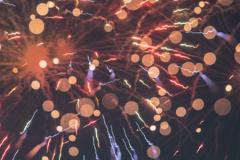- Overview
-
I am interested in using non-invasive imaging techniques, such as magnetic resonance imaging (MRI), in order to help scientists and clinicians better understand brain health and disease, and how to treat an unhealthy brain. MRIs are incredibly useful for these purposes as, unlike an X-ray or a CT scan, they do not give off any harmful radiation, so people can be scanned multiple times, including babies and pregnant mothers. Additionally, MRIs are very diverse in what information they can provide, including high resolution anatomical information, the activity of the brain, specific chemicals or metabolites and their concentrations, and more. When these scans are combined, they can often give us more information together than the sum of their parts. I am interested in improving these techniques, exploring how they can be combined in novel ways, and ultimately in seeing how they can be used to tell us something new about the brain that we did not know before. It is in doing so that I hope to help treat various insults, injuries and diseases of the brain in order to help people lead better lives, or in the case of infants, setting them up on the right track.
- Publications
-
Does the Brain’s E:I Balance Really Shape Long-Range Temporal Correlations? Lessons Learned from 3T MRI
Biorxiv
Sochan, L. and Archibald, J. and Weber, A.M.
DOI: 10.1101/2025.03.28.645973
2025The application of magnetic susceptibility separation for measuring cerebral oxygenation in preterm neonates
Pediatric Research
Carmichael, T.G. and Rauscher, A. and Grunau, R.E. and Weber, A.M.
DOI: 10.1038/s41390-025-03966-6
2025Assessing Semiregional Cerebral Oxygen Consumption (CMRO2) in Preterm Neonates: A Quantitative MRI Cohort Study With Exploratory Analysis of Respiratory Support
NMR in Biomedicine
Zhu, C. and Chan, N. and Chacko, A. and Holsti, L. and Grunau, R. and Weber, A.
DOI: 10.1002/nbm.70065
2025ECI biocommentary
Pediatric Research
Weber, A.M.
DOI: 10.1038/s41390-025-04167-x
2025Integrating Structural, Functional, and Biochemical Brain Imaging Data with MRShiny Brain - An Interactive Web Application
Jessica Archibald and Alexander Mark Weber and Paulina S. Scheuren and Oscar Ortiz and Cassandra Choles and Jaimie J. Lee and Niklaus Zölch and Erin L. MacMillan and John L. K Kramer
DOI: 10.55458/neurolibre.00029
12/2024(GitHubRepo) Integrating Structural, Functional, and Biochemical Brain Imaging Data with MRShiny Brain - An Interactive Web Application
Zenodo
DOI: 10.5281/zenodo.14375264
12/2024(LivingPreprint) Integrating Structural, Functional, and Biochemical Brain Imaging Data with MRShiny Brain - An Interactive Web Application
Zenodo
DOI: 10.5281/zenodo.14375267
12/2024Iron Deficiency and Sleep/Wake Behaviors: A Scoping Review of Clinical Practice Guidelines-How to Overcome the Current Conundrum?
MDPI
DOI: 10.48350/199621
2024Changes in cortical grey matter volume with Cognitive Orientation to daily Occupational Performance intervention in children with developmental coordination disorder
Frontiers in Human Neuroscience
Malik, M.A. and Weber, A.M. and Lang, D. and Vanderwal, T. and Zwicker, J.G.
DOI: 10.3389/fnhum.2024.1316117
2024Temporal complexity of the BOLD-signal in preterm versus term infants
Cerebral Cortex
Mella, A.E. and Vanderwal, T. and Miller, S.P. and Weber, A.M.
DOI: 10.1093/cercor/bhae426
2024Cortical grey matter volume differences in children with developmental coordination disorder compared to typically developing children
Frontiers in Human Neuroscience
Malik, M. and Weber, A. and Lang, D. and Vanderwal, T. and Zwicker, J.G.
DOI: 10.3389/fnhum.2024.1276057
2024Cerebrovascular Reactivity Following Spinal Cord Injury
Topics in spinal cord injury rehabilitation
Weber, A.M. and Nightingale, T.E. and Jarrett, M. and Lee, A.H.X. and Campbell, O.L. and Walter, M. and Lucas, S.J.E. and Phillips, A. and Rauscher, A. and Krassioukov, A.V.
DOI: 10.46292/sci23-00068
2024Iron Deficiency and Sleep/Wake Behaviors: A Scoping Review of Clinical Practice Guidelines—How to Overcome the Current Conundrum?
Nutrients
McWilliams, S. and Hill, O. and Ipsiroglu, O.S. and Clemens, S. and Weber, A.M. and Chen, M. and Connor, J. and Felt, B.T. and Manconi, M. and Mattman, A. and Silvestri, R. and Simakajornboon, N. and Smith, S.M. and Stockler, S.
DOI: 10.3390/nu16152559
2024The Effects of Wearing a 3-Ply or KN95 Face Mask on Cerebral Blood Flow and Oxygenation
Journal of Magnetic Resonance Imaging
Aisling Fothergill and Christoph Birkl and Christian Kames and Wayne Su and Alexander Weber and Alexander Rauscher
DOI: 10.1002/jmri.28448
06/2023Monofractal analysis of functional magnetic resonance imaging: An introductory review
Human Brain Mapping
Olivia Lauren Campbell and Alexander Mark Weber
DOI: 10.1002/hbm.25801
06/2022Fractal-Based Analysis of fMRI BOLD Signal During Naturalistic Viewing Conditions
Frontiers in Physiology
Campbell, O. and Vanderwal, T. and Weber, A.M.
DOI: 10.3389/fphys.2021.809943
2022Orientation dependence of R2 relaxation in the newborn brain
Neuroimage
Bartels, L.M. and Doucette, J. and Birkl, C. and Zhang, Y. and Weber, A.M. and Rauscher, A.
DOI: 10.1016/j.neuroimage.2022.119702
2022Quantitative Susceptibility Mapping of Venous Vessels in Neonates with Perinatal Asphyxia
American Journal of Neuroradiology
A.M. Weber and Y. Zhang and C. Kames and A. Rauscher
DOI: 10.3174/ajnr.A7086
07/2021Quantitative analysis of punctate white matter lesions in neonates using quantitative susceptibility mapping and R2* relaxation
American Journal of Neuroradiology
Zhang, Y. and Rauscher, A. and Kames, C. and Weber, A.M.
DOI: 10.3174/ajnr.A6114
2019Myelin water imaging and R 2 * mapping in neonates: Investigating R 2 * dependence on myelin and fibre orientation in whole brain white matter
NMR in Biomedicine
Alexander Mark Weber and Yuting Zhang and Christian Kames and Alexander Rauscher
DOI: 10.1002/nbm.4222
2019Pathological Insights From Quantitative Susceptibility Mapping and Diffusion Tensor Imaging in Ice Hockey Players Pre and Post-concussion.
Frontiers in neurology
DOI: 10.3389/fneur.2018.00575
PubMed: 30131752
08/2018Imaging the Role of Myelin in Concussion.
Neuroimaging clinics of North America
DOI: 10.1016/j.nic.2017.09.005
PubMed: 29157855
10/2017Proton magnetic resonance spectroscopy of prefrontal white matter in psychotropic naïve children and adolescents with obsessive-compulsive disorder
Psychiatry Research - Neuroimaging
Weber, A.M. and Soreni, N. and Stanley, J.A. and Greco, A. and Mendlowitz, S. and Szatmari, P. and Schachar, R. and Mannasis, K. and Pires, P. and Swinson, R. and Noseworthy, M.D.
DOI: 10.1016/j.pscychresns.2014.02.004
2014A preliminary study of functional connectivity of medication naïve children with obsessive-compulsive disorder
Progress in Neuro-Psychopharmacology and Biological Psychiatry
Weber, A.M. and Soreni, N. and Noseworthy, M.D.
DOI: 10.1016/j.pnpbp.2014.04.001
2014A preliminary study on the effects of acute ethanol ingestion on default mode network and temporal fractal properties of the brain
Magnetic Resonance Materials in Physics, Biology and Medicine
Weber, A.M. and Soreni, N. and Noseworthy, M.D.
DOI: 10.1007/s10334-013-0420-5
2014Metabolite measurements in the caudate nucleus, anterior cingulate cortex and hippocampus among patients with mitochondrial disorders: a case-control study using proton magnetic resonance spectroscopy.
CMAJ open
DOI: 10.9778/cmajo.20120020
PubMed: 25077102
01/2013N-type Ca2+ channels carry the largest current: Implications for nanodomains and transmitter release
Nature Neuroscience
Weber, A.M. and Wong, F.K. and Tufford, A.R. and Schlichter, L.C. and Matveev, V. and Stanley, E.F.
DOI: 10.1038/nn.2657
2010PDLIM5 is not a neuronal CaV2.2 adaptor protein
Nature Neuroscience
Gardezi, S.R. and Weber, A.M. and Li, Q. and Wong, F.K. and Stanley, E.F.
DOI: 10.1038/nn0809-957a
2009 - Research
-
Current Research Projects
I am looking for graduate students and postdoctoral fellows to join my lab. My ideal candidate is someone with experience programming (python, linux/bash, git, matlab, R), a multidisciplinary interest and background, curious, driven, humble, and good communication/interpersonal skills.
I am also looking for exciting new collaborations with other clinicians and investigators.
Currently, my lab is focused on one project:Fractal Analysis of fMRI Signals
Since the 1990s, it has been suggested that the brain operates in a critical state between order and disorder. Systems that exist in a critical state exhibit scale-invariance, power-law distributions, fractal geometry, and long-range correlations. Evidence to support the brain criticality hypothesis comes from many different avenues, both spatial (dendritic branching and small-world network connectivity), and temporal (neurotransmitter release, neuronal firing, local field potentials, and MEG, EEG, and fMRI signals), suggesting that in the brain, criticality is the rule, not the exception. It has been further theorized that existing in this state maximizes signalling efficiency, storage capacity, and flexibility. Thus, being able to properly identify and measure criticality is a key component in trying to understand how the brain functions. Unfortunately, in a rush to investigate and publish findings on criticality in fMRI neuroimaging, a rigorous testing of the assumptions and algorithms used for these purposes has not yet been performed.
Specifically, the aim of our study is to investigate how to properly analyze functional MRI time-series using fractal mathematics. This sort of analysis has shown some promise as a biomarker in concussions, Alzheimers, autism and more. Specifically, we hope to develop a signal-processing tool in Python that will: 1) test whether a signal follows a power-law distribution; 2) categorize the signal as either fractional Gaussian noise (fGn) or fractional Brownian motion (fBm); and 3) accurately report the signal’s Hurst exponent (H) value between 0 and 1. Eventually the tool will be used to investigate the nature of fMRI signals and the effects of various preprocessing methods, before being used to investigate physiological and clinical problems. In addition, the software will be made available online for free for other researchers to use.Others
I also have experience and interest in the following subjects: preterm birth; brain development; cerebral vascular health; quantitative susceptibility mapping; concussion / TBI; obsessive compulsive disorder; brain intoxication; brain networks; resting state networks; diffusion tensor imaging; myelin water imaging; machine learning and deep learning;GrantsNSERC Discovery Grant - Mapping the Structural and Functional Development of the Brain in the First Year of Life: A State-of-the-Art Quantitative MRI Approach - $212,500 – 2024-2029 – PI
CIHR - Brain Connectome and Neurodevelopment in Neonatal Hypoxic-Ischemic Encephalopathy - $615,000 – 2025-2030 – Co-Investigator; PI = Thiviya Selvanathan
BCCHRI Catalyst Grant - Brain and Motor Development of Young Children - $20,000 – 2025-2026 – CoPI with Jill Zwicker
BCCHRI Catalyst Grant - Brain development in infants who receive CALMER - $20,000 – 2025-2026 – CoI; PIs = Liisa Holsti and Manon Ranger
Honours & AwardsSupervisor Recognition Award - UBC Science Co-op - 2021
BC Children's Hospital Research Institute Child & Family Research Institute M.I.N.D. Postdoctoral Fellowship - $100,000 - July 2016 – July 2018
School of Biomedical Engineering, McMaster University - Dr. David Williams Award in Biomedical Engineering - $1,000 - November 2012
Natural Sciences and Engineering Research Council - NSERC Postgraduate Scholarship (PGS D) - $63,000 – 2010-2012
Neuroscience Program, University of Toronto - UofT Neuroscience Program CAN-2009 Travel Award - $500 - May 2009
University of Toronto – UofT Fellowship - $1,600 – September 2008
Department of Physiology, University of Toronto - UofT Dept. of Physiology Scholarship - $2,000 – September 2007
Department of Chemistry, University of Toronto - David L. Coffen Memorial Scholarship in Organic Chemistry - $800 - February 2006
Natural Sciences and Engineering Research Council - NSERC Undergraduate Student Research Award - $6,500 - Summer 2005
Research Group MembersPrithisha Gill, Undergraduate Student
Erhan Javed, Undergraduate Academic Assistant
Floria Lu, Undergraduate Academic Assistant
Ran Mo, INSPIRE TRAINEE PROGRAM
Imaging the brain: Q&A with Dr. Alexander Weber
Understanding the human mind is a millennia’s old pursuit, but it wasn’t until the 1970s that researchers were first able to peer into the brain without using a scalpel. Dr. Alexander Weber is a new investigator researching how to improve and combine different ways of using imaging to give doctors the information they need to improve childhood health.






